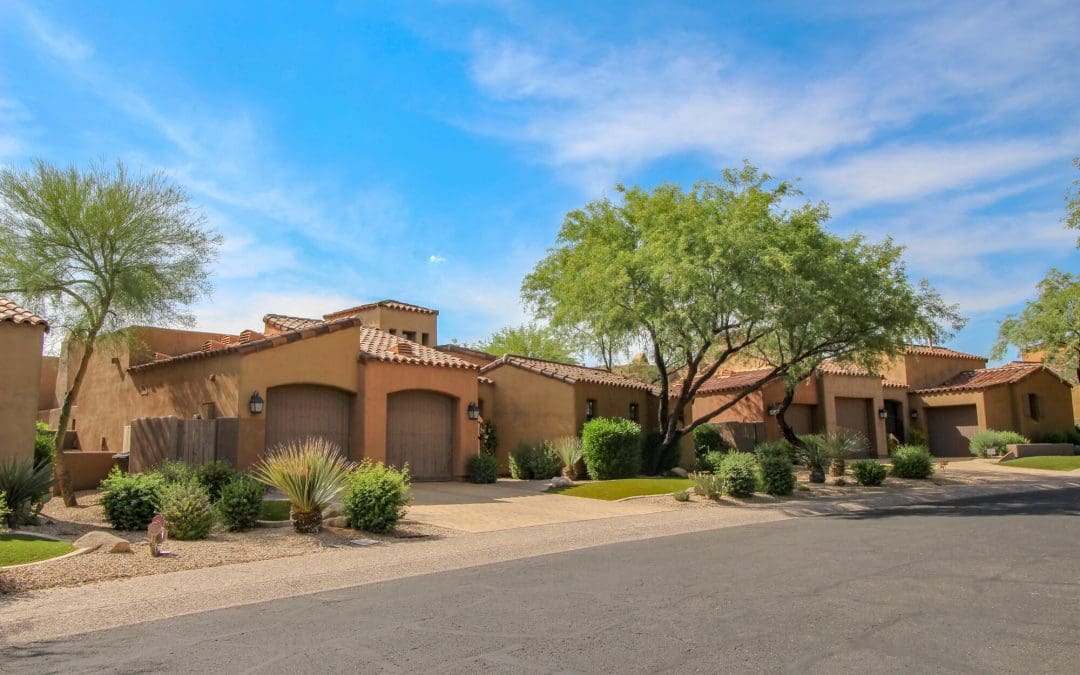Landscaping for desert homes presents unique challenges and opportunities. With scorching temperatures, minimal rainfall, and arid conditions, creating a landscape that is visually appealing, sustainable, and suited to the harsh environment is beneficial. Here’s how you can transform your desert property into a stunning oasis.
Understanding the Desert Environment
Before designing and selecting plants, it’s crucial to understand the desert environment. Deserts typically experience extreme temperatures, with sweltering days and cool nights. Rainfall is scarce, and the soil is often sandy or rocky, which affects water retention and plant growth. Knowing these conditions will help you make informed decisions when planning your landscape.
Choosing the Right Plants When Landscaping for Desert Homes
Selecting the right plants is the foundation of successful desert landscaping. Opt for native or drought-tolerant plants that thrive in arid conditions. Some excellent choices include succulents, cacti, and various types of agave. These plants are adapted to the desert environment and require minimal water and maintenance.
Consider incorporating a variety of plants to add texture and color to your landscape. Desert marigold, Mexican poppy, and desert lavender are beautiful flowering plants that can brighten up your garden. Don’t forget to include shade trees like the Palo Verde or Mesquite, which can provide much-needed relief from the sun.
Efficient Irrigation Systems
Water conservation is paramount in desert landscaping. An efficient irrigation system gives plants the necessary hydration without wasting water. Drip irrigation systems are highly recommended as they deliver water directly to the plant roots, minimizing evaporation and runoff.
Another effective method is xeriscaping, which involves designing the landscape to reduce or eliminate the need for supplemental water. Group plants with similar water requirements together, and use mulch to retain soil moisture.
Hardscaping Elements and Landscaping for Desert Homes
Incorporating hardscaping elements can enhance the beauty and functionality of your desert landscape. Hardscaping refers to using non-plant materials such as rocks, gravel, and stone. These elements add visual interest and help conserve water by reducing the area that requires irrigation.
Create pathways with flagstone or gravel to guide visitors through your garden. Build raised beds or terraces with natural stone to add dimension and structure. You can also include features like a fire pit, seating area, or water fountain to create focal points and make your outdoor space more inviting.
Soil Management
Desert soils are often low in organic matter and nutrients, making soil management a critical aspect of desert landscaping. Improve soil quality by adding compost or organic mulch, enhancing water retention and providing essential nutrients to your plants. Regularly check soil pH levels and amend them to ensure optimal plant growth.
Sustainable Practices
Sustainability should be at the core of your desert landscaping efforts. Beyond water conservation, consider using locally sourced materials to reduce your environmental footprint. Choose organic fertilizers and pest control methods to maintain a healthy ecosystem.
Additionally, incorporating solar-powered lighting can illuminate your landscape without increasing your energy consumption. By integrating sustainable practices, you create a beautiful garden and contribute to preserving the desert environment.
Maintenance Tips When Landscaping for Desert Homes
While desert landscapes are generally low-maintenance, they still require regular care to stay healthy and attractive. Prune your plants to remove dead or overgrown branches, and check for pests and diseases regularly. Monitor your irrigation system to ensure it’s functioning correctly and adjust the watering schedule based on seasonal changes.
Keep an eye on the weather and be prepared for extreme conditions, such as heat waves or unexpected frosts, that can affect your plants. You can maintain a thriving desert landscape year-round by staying vigilant and proactive.
Landscaping for desert homes offers a unique opportunity to blend beauty with sustainability. By understanding the desert environment, choosing the right plants, implementing efficient irrigation systems, incorporating hardscaping elements, managing soil effectively, and embracing sustainable practices, you can create a stunning oasis that thrives in the harshest conditions. With careful planning and maintenance, your desert landscape will enhance your home’s curb appeal and reflect a deep respect for the natural environment.
FAQs
What are the best ground cover plants for desert landscaping?
Ground cover plants are essential for preventing soil erosion and retaining moisture in desert landscapes. Some excellent options include Red Yucca, known for its tough nature and red or coral blooms; Desert Carpet, which spreads quickly and is drought-tolerant; and Trailing Dalea, appreciated for its silvery foliage and purple flowers.
What types of mulch work best in a desert landscape?
Mulch helps retain soil moisture and suppress weeds. In desert landscapes, gravel or crushed stone are excellent choices as they are durable and complement the desert aesthetic. Decomposed granite, a fine, gravel-like material, provides excellent ground cover. Organic mulch, like wood chips or bark, can also be used but should be applied in a thin layer to avoid over-retaining moisture.
Can I grow a lawn in a desert landscape?
While traditional lawns are not ideal for desert environments due to their high water requirements, there are alternatives. Artificial turf provides the look of a lawn without the need for water. Buffalo grass is a drought-tolerant grass that requires less water than traditional varieties. Drought-tolerant ground covers like Lippia or Dymondia can also do the trick.
